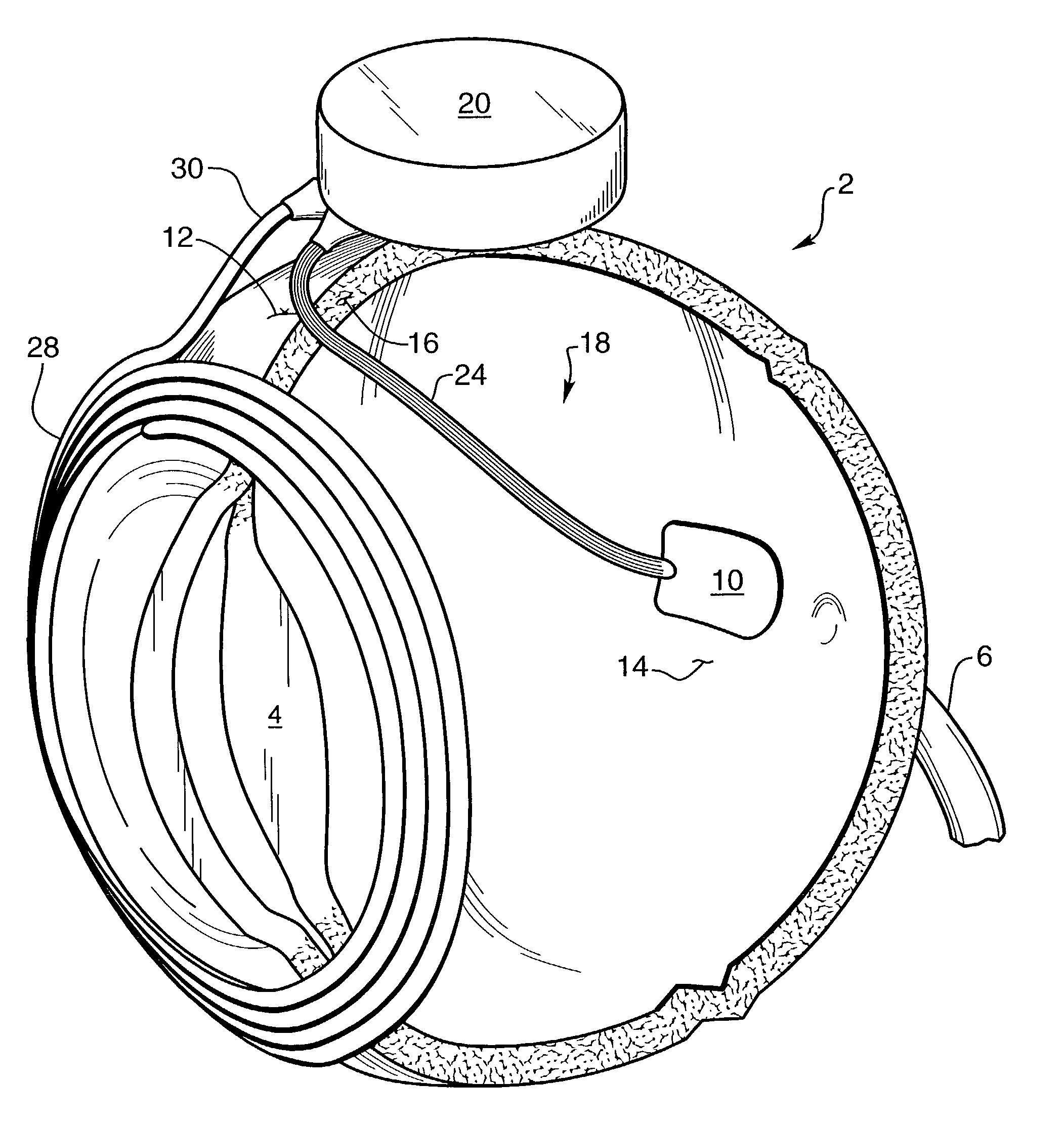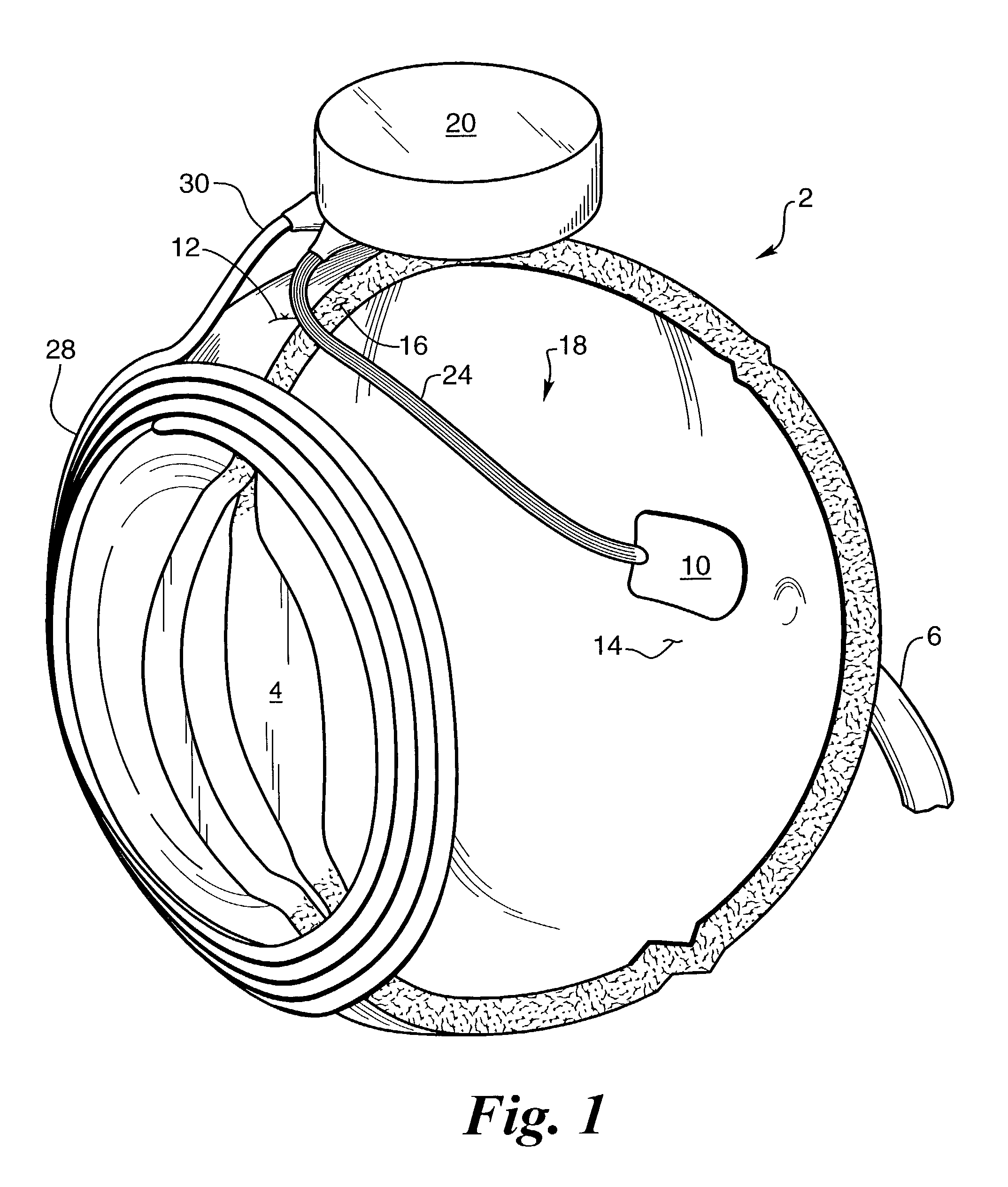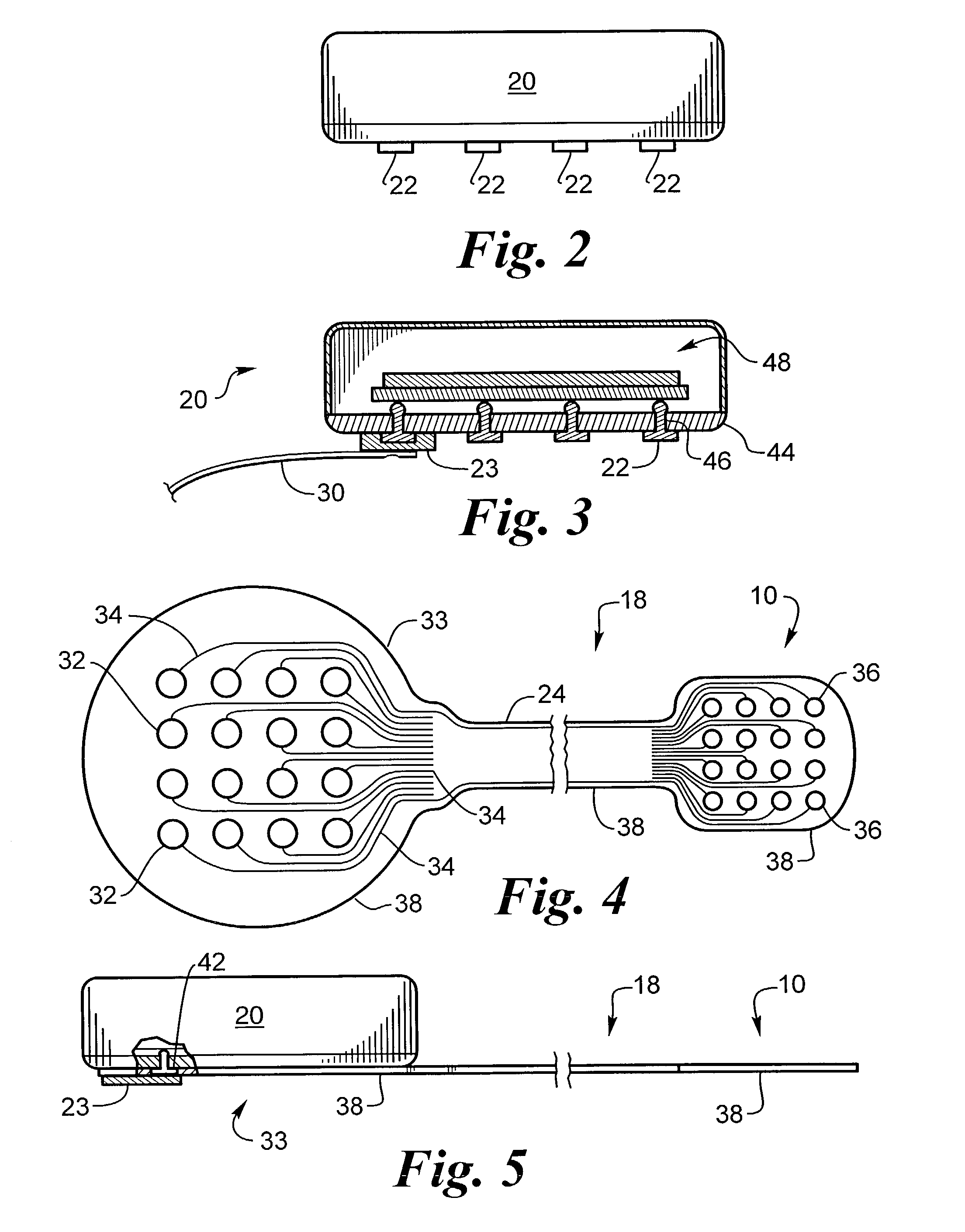Biocompatible bonding method and electronics package suitable for implantation
a biocompatible bonding and electronics package technology, applied in the direction of printed circuit, printed element electric connection formation, therapy, etc., can solve the problems of biocompatible connection, high number of stimulation electrodes cannot be achieved without sacrifice, and each of these materials has limitations on its use as implants
- Summary
- Abstract
- Description
- Claims
- Application Information
AI Technical Summary
Benefits of technology
Problems solved by technology
Method used
Image
Examples
Embodiment Construction
[0034]The following description is the best mode presently contemplated for carrying out the invention. This description is not to be taken in a limiting sense, but is made merely for describing the general principles of the invention. The scope of the invention should be determined with reference to the claims.
[0035]The present invention provides a flexible circuit electronics package and a method of bonding a flexible circuit to a hermetic integrated circuit which is useful for a number of applications, including implantation in living tissue as a neural interface, such as a retinal electrode array or an electrical sensor. The tissue paper thin flexible circuit 18, FIG. 1, transmits electrical signals to the eye 2 by means of electrodes, that are located in a stimulating electrode array 10, that are in contact with the retina 14. It is obvious that in addition to a stimulating electrode array or sensing electrode, the electrodes may be contacts connecting to remote electrodes. FIG...
PUM
| Property | Measurement | Unit |
|---|---|---|
| Electrical conductivity | aaaaa | aaaaa |
| Flexibility | aaaaa | aaaaa |
| Biocompatibility | aaaaa | aaaaa |
Abstract
Description
Claims
Application Information
 Login to View More
Login to View More - R&D
- Intellectual Property
- Life Sciences
- Materials
- Tech Scout
- Unparalleled Data Quality
- Higher Quality Content
- 60% Fewer Hallucinations
Browse by: Latest US Patents, China's latest patents, Technical Efficacy Thesaurus, Application Domain, Technology Topic, Popular Technical Reports.
© 2025 PatSnap. All rights reserved.Legal|Privacy policy|Modern Slavery Act Transparency Statement|Sitemap|About US| Contact US: help@patsnap.com



